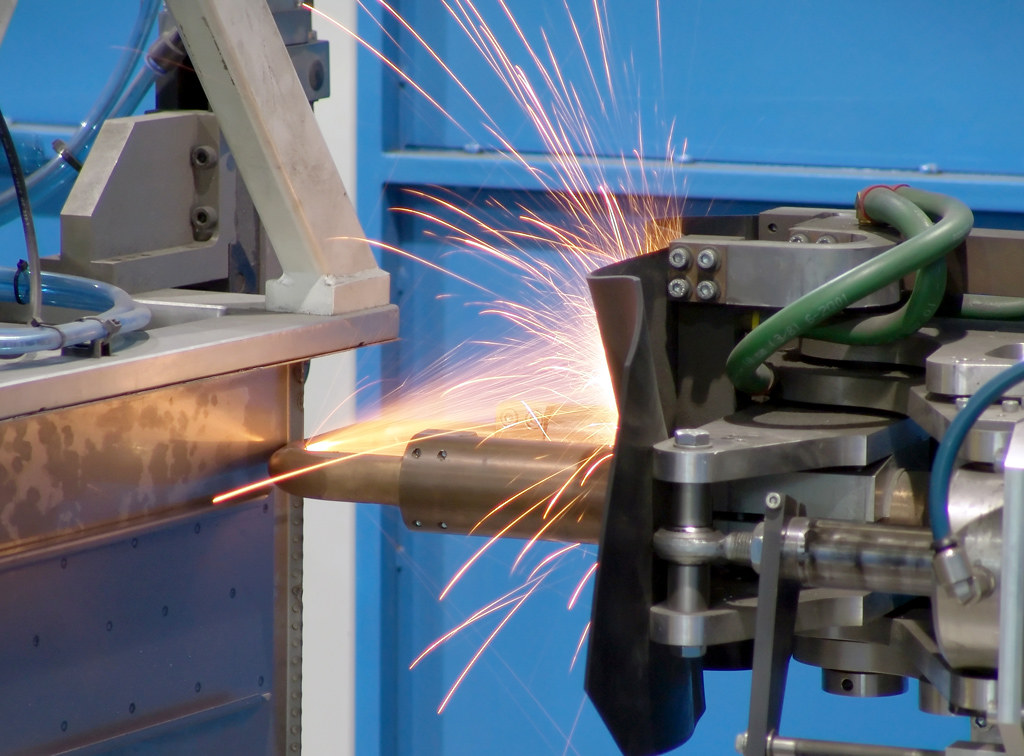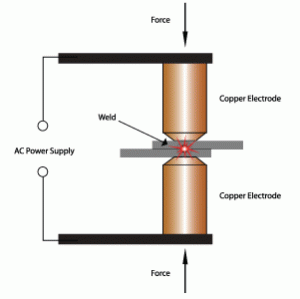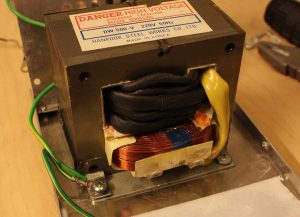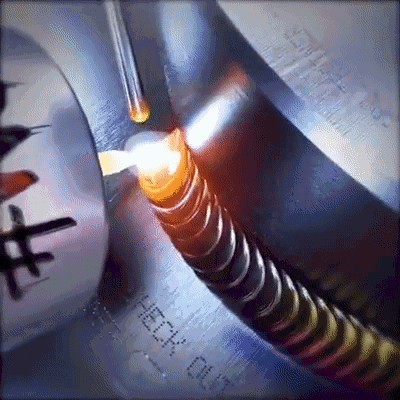Resistance spot welding (RSW) , also known as resistance welding , is a key process in sheet metal manufacturing and industrial manufacturing. This process depends on connecting two metal pieces in contact using heat that is produced as a result of their resistance to a high-voltage electric current. In this article, we will take a look at the importance of spot welding, how it is performed, and the factors affecting weld quality.

How is point welding done?
Spot welding is used for sheet metal with thickness between 0.5 mm and 3 mm. The process begins by holding two metal pieces together and applying a force to them. A high-amp electrical current is directed through copper electrodes that concentrate the current in a small spot on the two pieces to be welded. Because the resistance of the two pieces to the electric current is higher than the resistance of the electrodes, strong heating is produced in the welding area. This heating melts the metal pieces at the weld spot, and the pressure applied helps join them together.

The high amperage current is produced by electric transformer

The importance of spot welding
Spot welding is a critical part of sheet metal manufacturing and industrial manufacturing processes. It is of great importance in many industries, including:
1. Automotive industry:
Spot welding is widely used in the manufacture of automobile bodies and parts, as it ensures a strong and sustainable connection between metal sheets.2. Electrical appliances industry:
- It is used to assemble many electrical components such as air conditioners and cooking ovens.3. Small and large industries:
- Spot welding can be used in the manufacture of a variety of products, from furniture manufacturing to packaging manufacturing and the electrical and electronic industries.Factors affecting welding quality
There are several factors that affect the quality of the spot welding process. Of which:
- Applied pressure: The pressure of the electrodes on the metal parts must be adequate to ensure a good and solid connection.
- Current time: The duration of the electric current’s operation affects the size and depth of the weld.
- Temperature: The process temperature controls the welding effect and quality.
Applications and technologies used
Spot welding is used in a variety of applications and industries. This technology can be found in the automobile industry, electrical appliance industry, electronics industries, and even the furniture industry. To improve the welding quality and make it more precise, advanced technologies such as automatic control and X-ray quality control are used.
Safety in spot welding
Safety comes first in the spot welding process. Workers must wear protective clothing and equipment and follow safety procedures
A way to avoid accidents and injuries.
The future of spot welding
Given the importance of spot welding in a variety of industries, it is possible that we will see future developments in this field. These developments can include improving technologies, expanding the range of applications, and increasing the precision of processes.
Conclusion
Spot welding is a critical process in sheet metal manufacturing and industrial manufacturing. It relies on high amperage electrical current to connect metal parts and ensure welding quality. With a deep understanding of how the process works and the factors influencing its quality, spot welding can be successfully applied in a variety of different applications and industries.
resources : https://fractory.com/spot-welding-explained/




